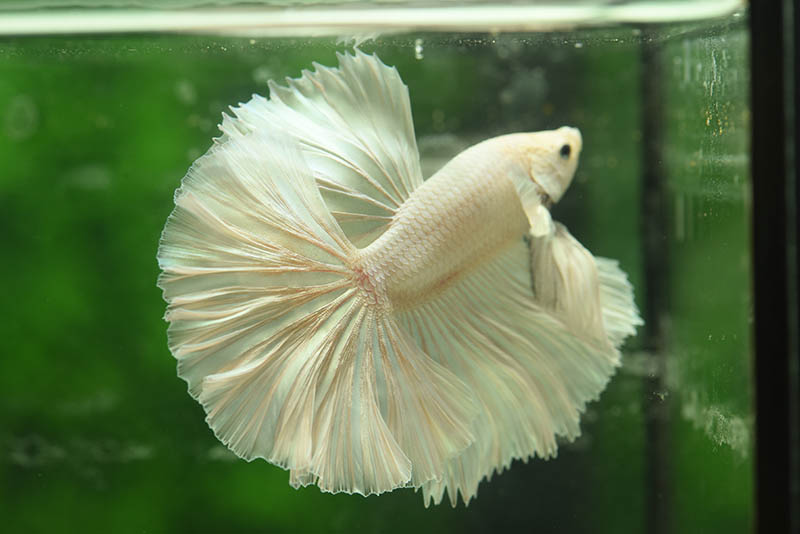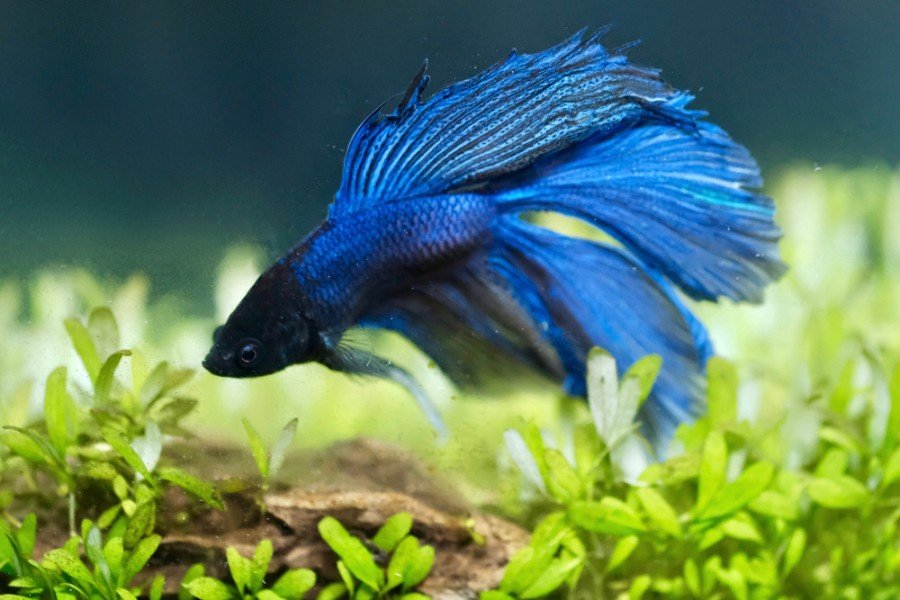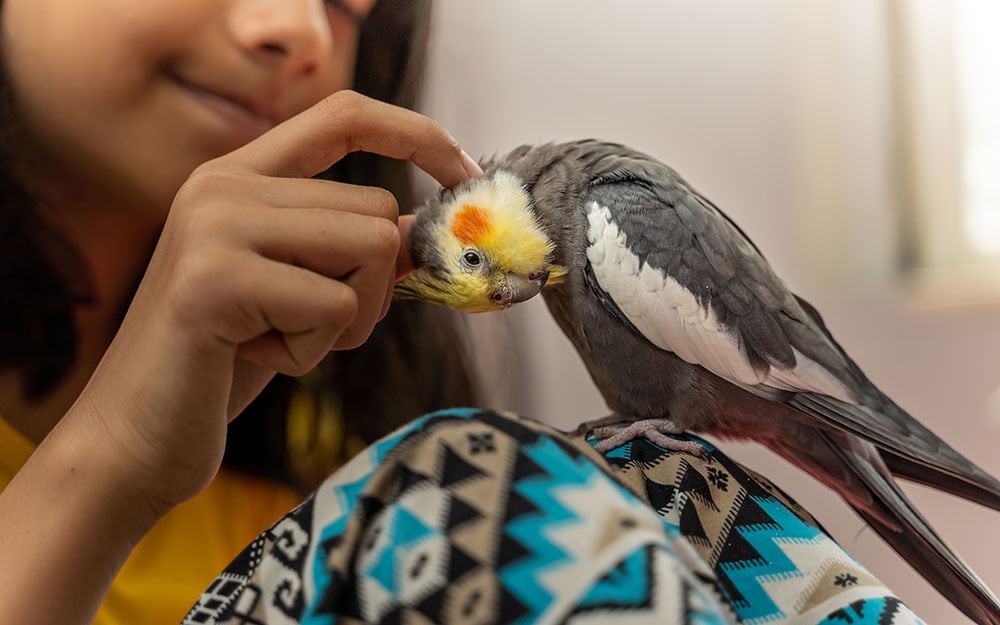Betta Fish Ich: Causes, Signs, Treatment & Prevention (Vet Answer)
By Dr. Luqman Javed, DVM (Vet)
Updated on

Click to Skip Ahead
Despite their hardy nature, Betta fish are not entirely immune to some diseases. Ich is a freshwater fish parasite that can sometimes be seen in Bettas. Read on as we explore this parasite in greater detail.
What Is Ich?
Ich (pronounced “ick”) is a shorthand for Ichthyophthirius multifiliis, a parasite that can infect almost all freshwater fish. In practice, though, this parasite is mostly found in cold water temperatures. Properly maintained tropical fish tanks rarely have issues with this parasite, which makes it quite a rare find in Bettas. When found in Bettas, it also indicates that the water parameters are less than ideal for the Betta.
A fully grown parasite within a fish’s skin is a 1-millimeter continuously rotating entity surrounded by the fish’s immune system cells and appears as a white dot or spot on the fish, its trademark sign.
The parasite stage found on the fish is known as a trophont. The life cycle of this parasite is relatively simple:
- Trophonts feed on a fish’s skin for nutrition.
- They eventually leave the fish and develop into a tomont.
- Each tomont then produces several thousand theronts.
- The tomont eventually bursts, releasing these theronts. Now infectious, they are termed as tomites.
- The tomites infect a fish and burrow into its skin, fins, or gills, and the cycle begins anew.

Main Causes of Ich
Ich is a parasite that cannot survive without a host, and therefore, its presence in your aquarium means one of the following:
- Your Betta was infected with the parasite before you purchased it.
- A new fish or invertebrate you added into your aquarium was infected with the parasite.
- You added contaminated water (from another aquarium) into your Betta’s aquarium.
Unlike most other diseases, Ich doesn’t seem to be affected too much by water quality; breaching quarantine protocol in the most pristine waters can still easily introduce it into your aquarium. That being said, it will likely cause much greater mortality and it thrives better in less-than ideal conditions and overstocked tanks.
With that said, having good quality water shouldn’t be mistaken for permission to delay treatment as this parasite can cause up to 100% mortality if left untreated.

Signs of Ich
As mentioned before, the trademark sign of this disease is the presence of small white salt-like spots on your fish. This may be accompanied by other signs shown by your fish:
- Randomly darts around the tank and rubs on objects in the tank (known as flashing)
- Refuses to eat
- Seems to breathe heavily
- The color changes
- Fish displays abnormal behavior (such as hiding, or inactivity)
- Rest on the bottom
- Fish can’t balance properly and may be swimming upside-down or sideways.
Ich & Bettas: The Importance of Environment
It is relatively rare to encounter Ich in Bettas for one fundamental reason: Bettas thrive in tropical waters. Noticing Ich on your Betta is a sign that their water temperature is probably less than ideal. The parasite’s life cycle is accelerated in warmer waters. In temperatures of around 25°C (77°F), the parasite completes its life cycle in about seven days. In warmer temperatures, the parasite dies off much faster. Many treatment protocols involve raising the water temperature to around 26.7°C (80°F).
The ideal temperature for Bettas is 28°C (82.4°F). At this temperature, the parasite shouldn’t last long in the water at all. Therefore, noticing this parasite on your Betta is an indication that you should look at the temperature in which your Betta is housed because it might be wrong.
Though you should obviously treat Ich in your Betta if you do notice it, you should keep in mind that its presence indicates that the water temperature you’re housing your Betta in is likely incorrect.

Treating Ich
There are several treatment options for Ich. These options can be combined or can be used individually, depending on the circumstances and the safety of the chemicals for your other fish.
Treatment options include the following:
- Changing the Temperature. Raise the temperature of the aquarium a little bit every day to about 26.7°C (80°F). This isn’t a cure but helps greatly. If your Betta is the only fish in the aquarium, you should increase the temperature to their ideal amount, 28°C (82.4°F).
- Ich-X. This is an over-the-counter medicine available at most pet stores or pet pharmacies. This medication is marketed as safe for invertebrates (like snails), ‘scaleless’ fish (like loaches), and plants.
- Aquarium Salt. Aquarium salt cannot be used in tanks with invertebrates, scaleless fish, or plants, which means you will have to remove these animals and plants before treatment. Aquarium salt is most effective when combined with heat. Take note that Bettas can tolerate salinity levels up to 9.35 mS/cm (6,000 ppm), but other fish may not be able to tolerate such levels. Only dose aquarium salt as directed on the bottle.
- Custom Filter Traps. A custom filter with a mesh size of 80 microns. This will trap the tomonts (the developmental stage of the parasite when they’re not attached to the fish) and not enable them to re-enter your aquarium.
- Switching Tanks. If you have a spare tank, moving your Betta between the two aquariums on a daily basis can help break the cycle of the parasite much faster. If you have a community setup, then all fish must be transported to and from the spare tank on a daily basis, making this option somewhat cumbersome for community setups.
Potential future treatment options include:
- Garlic Juice: a dilution of 40 mg per liter of aquarium water of garlic juice was effective in controlling Ich in some species of barbs and trout. However, safe doses for other fish (including Bettas) remain to be determined.
- Biological Control. Some bacteria have shown promising results as potential biological controls for this parasite (these bacteria don’t seem to harm fish).
- Vaccine. Attempts have been made to make vaccines to control this parasite in large-scale fisheries.
Treatments that have fallen out of favor with fish enthusiasts are:
- Malachite Green. Although effective, this product is a potential carcinogen, so it has largely fallen out of favor among fish keepers.
- Copper-Sulfate, Methylene Blue, and Potassium Permanganate. While effective, these products tend to have high environmental impacts, making their use somewhat controversial.
Preventing Ich
There are steps that you can take to decrease the likelihood of an infestation. When you bring a new fish home, quarantine it for 6–8 weeks or longer in a separate tank from the main tank. This step is vital, as Ich is a parasite that needs a host to survive; it cannot enter your tank unless it takes a ride on a new fish. This quarantine will give you plenty of time to monitor for the onset of signs of many diseases and infestations, including Ich. If your new fish is sick, you’ll only have to treat the quarantine tank and not your entire main tank.
If you decide to forgo quarantine (a decision that is not recommended), make sure you do not combine the water that your fish came in into the tank. Pouring water from the pet or aquarium store directly into the tank can introduce parasites that haven’t found a host yet. The same goes for any water that comes with plants and décor for your tank. It’s good practice to quarantine or bleach dip plants (with a safe dilution) before adding them to your tank.
Ich thrives better in poor water conditions, so maintaining water quality is key to preventing Ich. This is especially true if your water is cloudy or you don’t perform water changes on a regular basis because it’s more difficult to spot the presence of Ich on your fish.
Routinely check water parameters and make any adjustments needed to maintain the water quality. Lastly, you should perform water changes and carefully inspect your fish on a regular basis for any signs of illness.

Conclusion
Ich should be a rare occurrence in a Betta’s tank, and if it does present itself on your Betta, it’s a sign that there’s something wrong with the environment in which your fish is kept. Quickly diagnosing and treating this parasite is key, as it can cause mortality in your fish.
We hope the content provided in this article has helped you better understand this parasite and the importance of a good quarantine protocol for your fish.
- See Also: 10 Best Betta Water Conditioners
Featured Image Credit: Patcharanat Sriboonruang, Shutterstock













